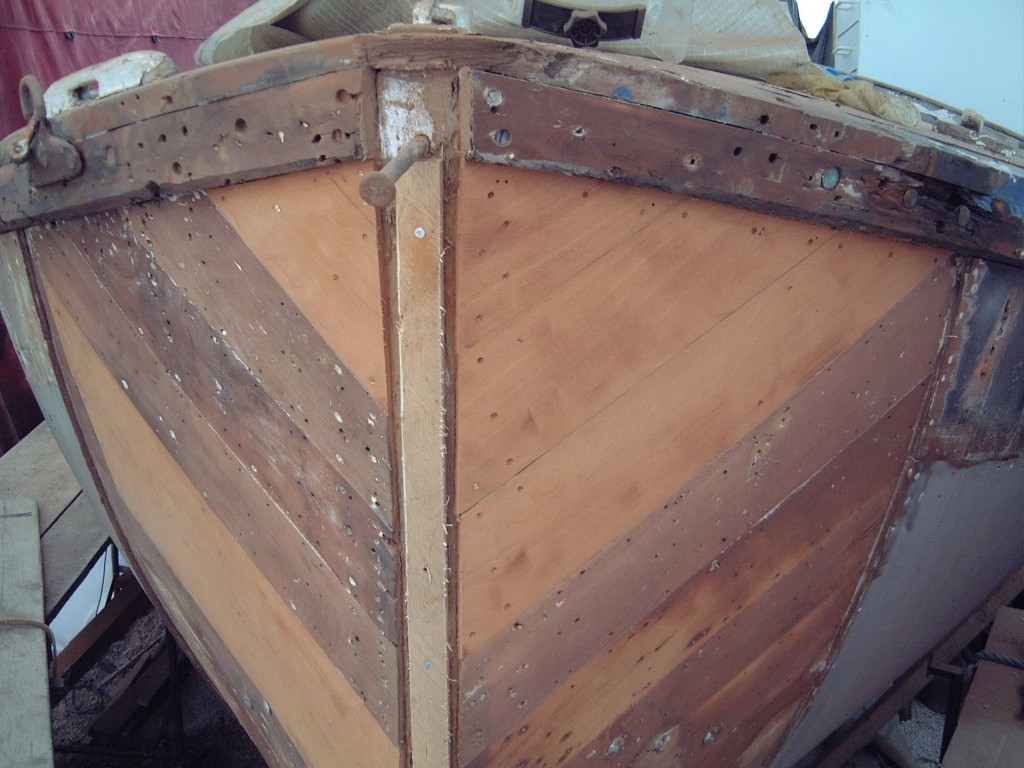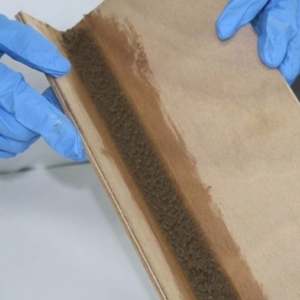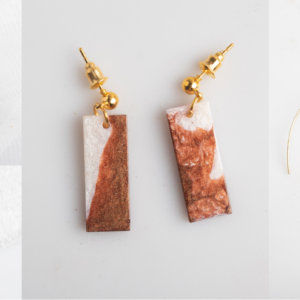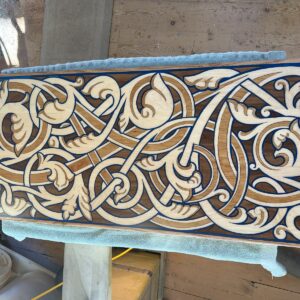How To: How to repair double diagonal hull planks
The thought of renewing double diagonal hull planks strikes fear into the heart of many an expert in wooden boat repair. But Mark Raynes has repaired 3,300 ft of it on his antique lifeboat the MANCHESTER AND SALFORD. In this blog he explains why there’s no need to panic and gives you his top tips for getting it right.
I’ve spent about 15 years now working on my old lifeboat, the MANCHESTER AND SALFORD. One of the biggest jobs was replacing the double diagonal planking. She was built in 1924 and had been, let’s say, ‘let go’, so much of the hull was completely rotten, especially around the fixings where fresh water had got in.
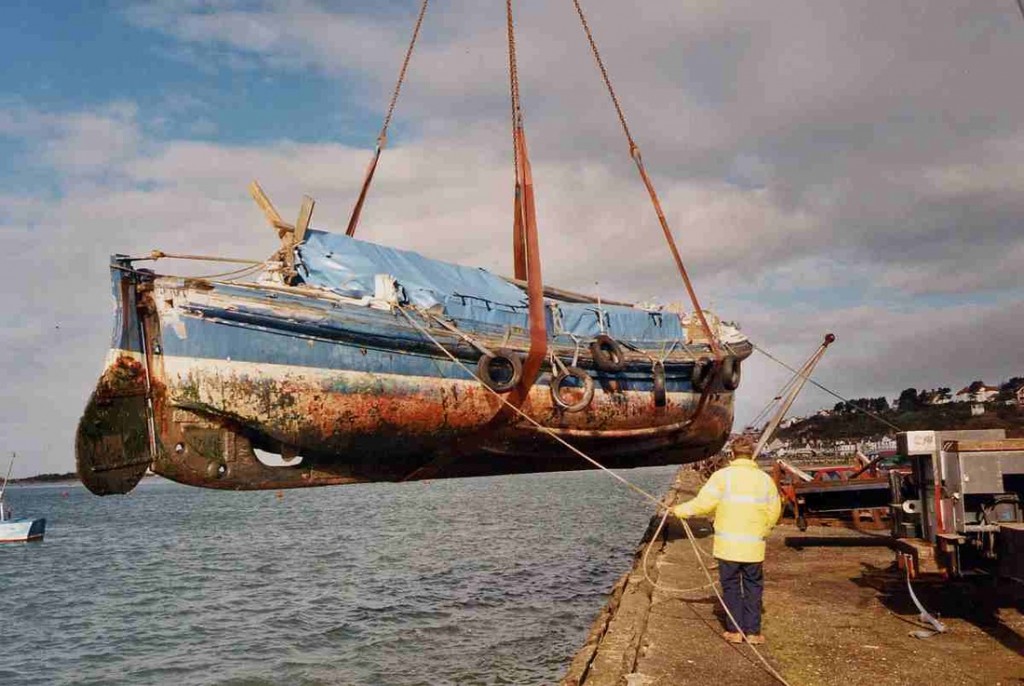
There really aren’t that many people who’ve done this kind of wooden boat repair, so I often get asked for advice. As a result, I’ve noticed that double diagonal has this curious effect on people’s psyche. Many seasoned boatbuilders have a fear of it and its apparent complexity. Maybe it’s the quantity of planking that needs to be replaced (there are often about five layers of it, after all) or the fact that you don’t do any caulking.
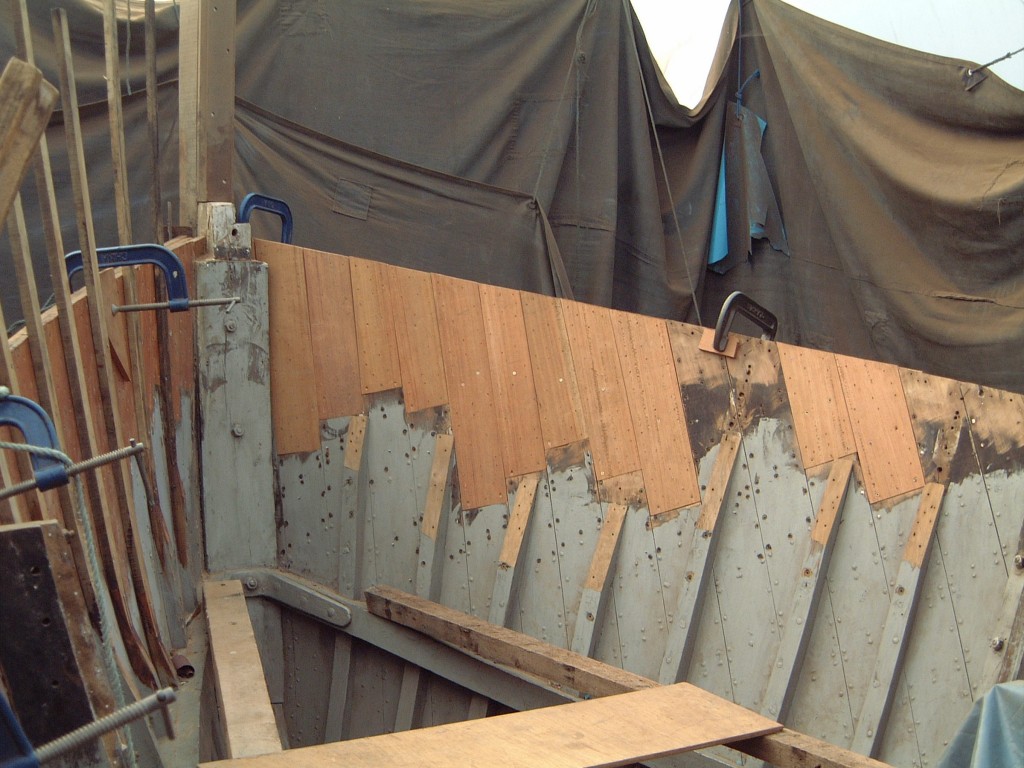
Having done a lot of it, I really want to reassure people how straightforward it is. I think it’s an easier wooden boat repair than a carvel hull. I honestly believe it’s something that even an amateur could do.
Why it’s so easy
First of all, you need hardly any tools for the job. You can even buy the replacement timbers pre-cut and planed if you want to, so that you can get away with using just a drill, a hammer, a chisel and an electric screwdriver.
Secondly, it’s light work. You’re typically using planks that are half an inch think and about five inches wide and because they’re going in semi-vertically they’re not very long. So unlike carvel planking, you can do it by yourself. If you’re only replacing a piece of a plank? Well that’s even easier.
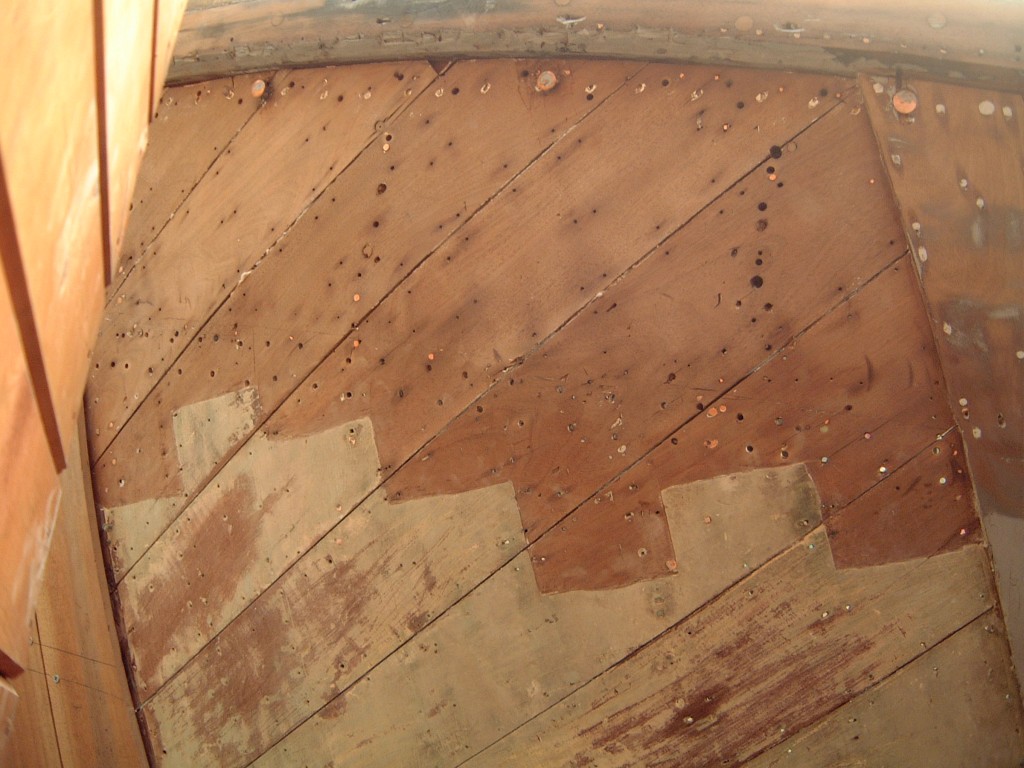
Thirdly, using epoxy (especially WEST SYSTEM® epoxy) makes it really straightforward. Plus it’ll give you a result that’s so much stronger than the original build could ever have been.
Mark’s top tips
- Watch out for the moisture content. Make sure all the planks are nice and dry, otherwise as soon as you apply the epoxy it goes milky and a grease forms on the surface. This reduces the strength of the bond.
- In the same vein, start after 10am. You want to avoid the morning dew.
- Don’t remove too many planks at once. I’ve seen people take out as many as thirty planks at once, but this weakens the structural integrity of the hull and can cause distortion. Concentrate on one repair at a time.
- Keep the repair environment warm. The average boat shed is dark and therefore not that dry. We had the MANCHESTER AND SALFORD in a polytunnel, which was a really good environment – bone dry, it can’t rain on you and the temperature is usually five degrees higher than outside. The only drawback is, on a hot day, it’s really warm inside, so you have to use different mixers with your epoxy to slow down the cure time. But we rarely have this problem in the UK!
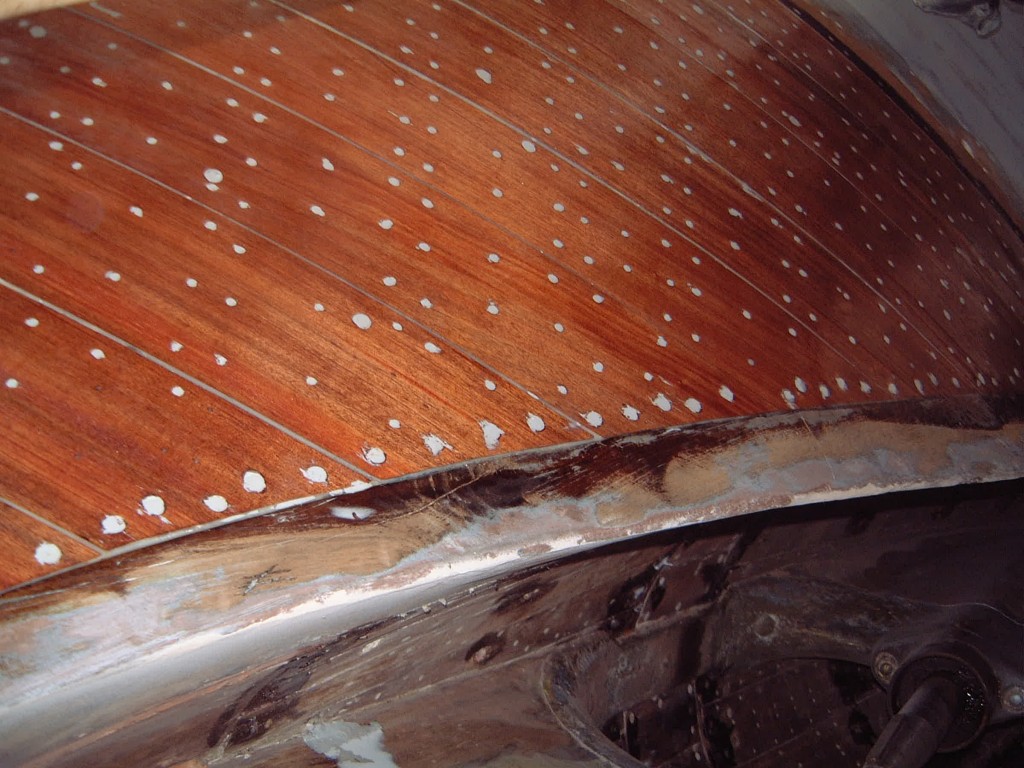
To see more of the MANCHESTER AND SALFORD, visit Mark’s website.
The thought of renewing double diagonal hull planks strikes fear into the heart of many an expert in wooden boat repair. But Mark Raynes has repaired 3,300 ft of it on his antique lifeboat the MANCHESTER AND SALFORD.
There isn’t another wooden boat repair technique that will give you the same quality of double diagonal hull repair as this. Using epoxy, it’s ten times stronger than the original and it’s an exceptionally good watertight seal, with no leaks below the waterline.
1. Check for wear
First of all, examine the area and decide how much of the plank to remove. A thorough examination should involve taking moisture readings and pricking the hull with a spike to spot any softness. You can also do a ‘ringing’ test with a hammer to sound out any dead areas.
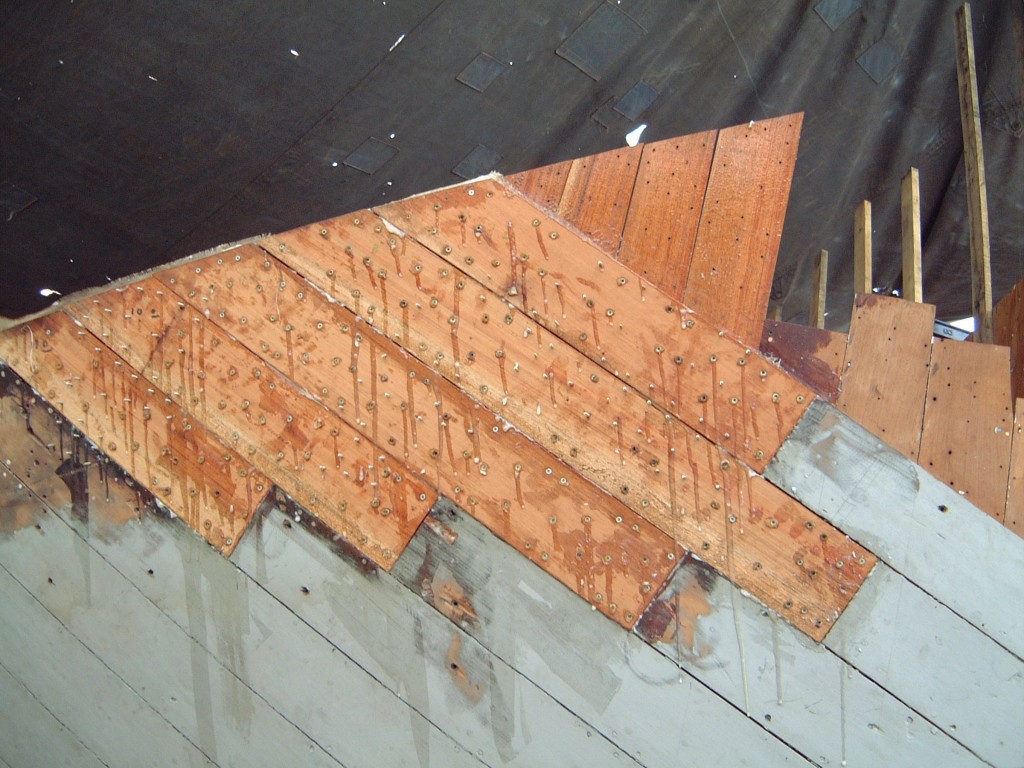
2. Cut the old plank out
Use a hammer and chisel to cut the plank just outside the area that’s affected. Ideally, you’d cut it over the top of a frame or a stringer so that you’d have something to screw the remaining section of the plank to. If not, you can cut it between frames and screw in a temporary block. You then remove any screws from the plank ends.
Once you’ve cut both ends of the plank, you split it using the chisel along its length to get it out.
3. Repair the membrane
A traditional double diagonal hull has a membrane in between the planking that’s made of calico and soaked in white lead paste. But this is often damaged and you can’t bond epoxy to it anyway.
Using new matting plus epoxy here, you can reinstate a superb watertight joint.
With the MANCHESTER AND SALFORD, we cut and peeled out the calico and then sanded the face of the inner plank so it was back to bare wood. We then wet the whole area out (between sides and ends and between inner and outer planking) with WEST SYSTEM 105 Epoxy Resin® and 205 Fast Hardener® mixed five to one by weight. Onto this, we dropped a pre-cut piece of woven cloth which we also soaked with epoxy. Lastly, we made an epoxy paste (I prefer to use microfibres over colloidal silica in mine) for the bonding.
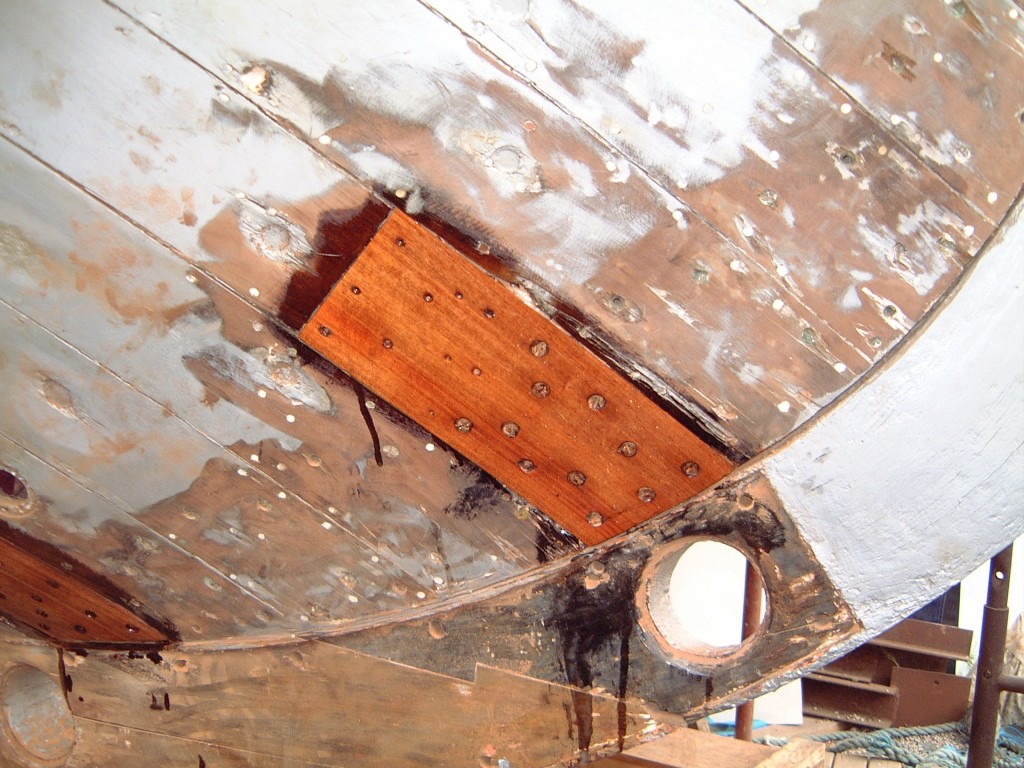
4. Bond the new plank
Before now you would have already cut a replacement plank to fit your gap and trial-fitted it. You would have also pre-drilled it to accept temporary steel screws (ensure these have release agent on) and drilled pilot holes in the inner plank. Drop the plank on top of the epoxy paste and tighten the temporary fixings well. It’s vital that the planks are firmly home with no gaps or voids; to pull them into their double-curved shape, you’ll need strong fixings.
It’s worth pointing out that we always completely cover our new planks in epoxy before fitting. That way, we can be sure they are super strong and will never move once in place.
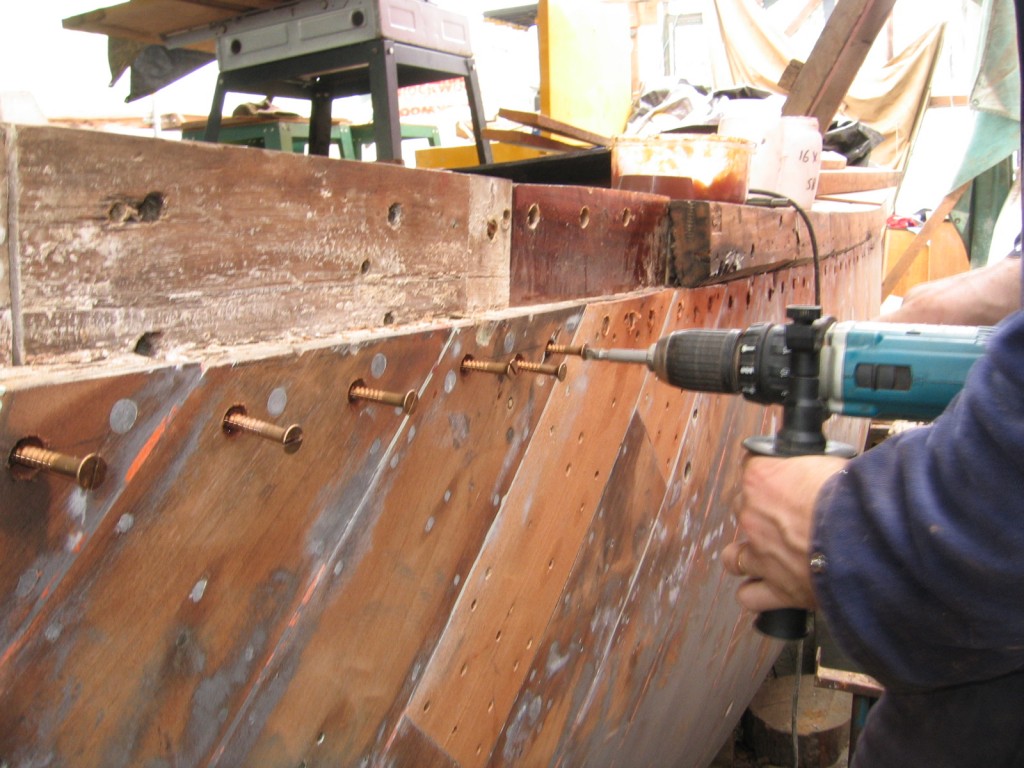
5. Nail and rove up again
The next day, once the whole job is set, unscrew the temporary screws and drill the correct size countersunk holes, before nailing and roving up the planks using traditional fixings (we used copper). In this way, you have both a bond and a mechanical fixing for added strength – and it also looks really good!
Read more about Mark’s work renovating the MANCHESTER AND SALFORD lifeboat.

